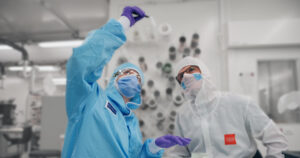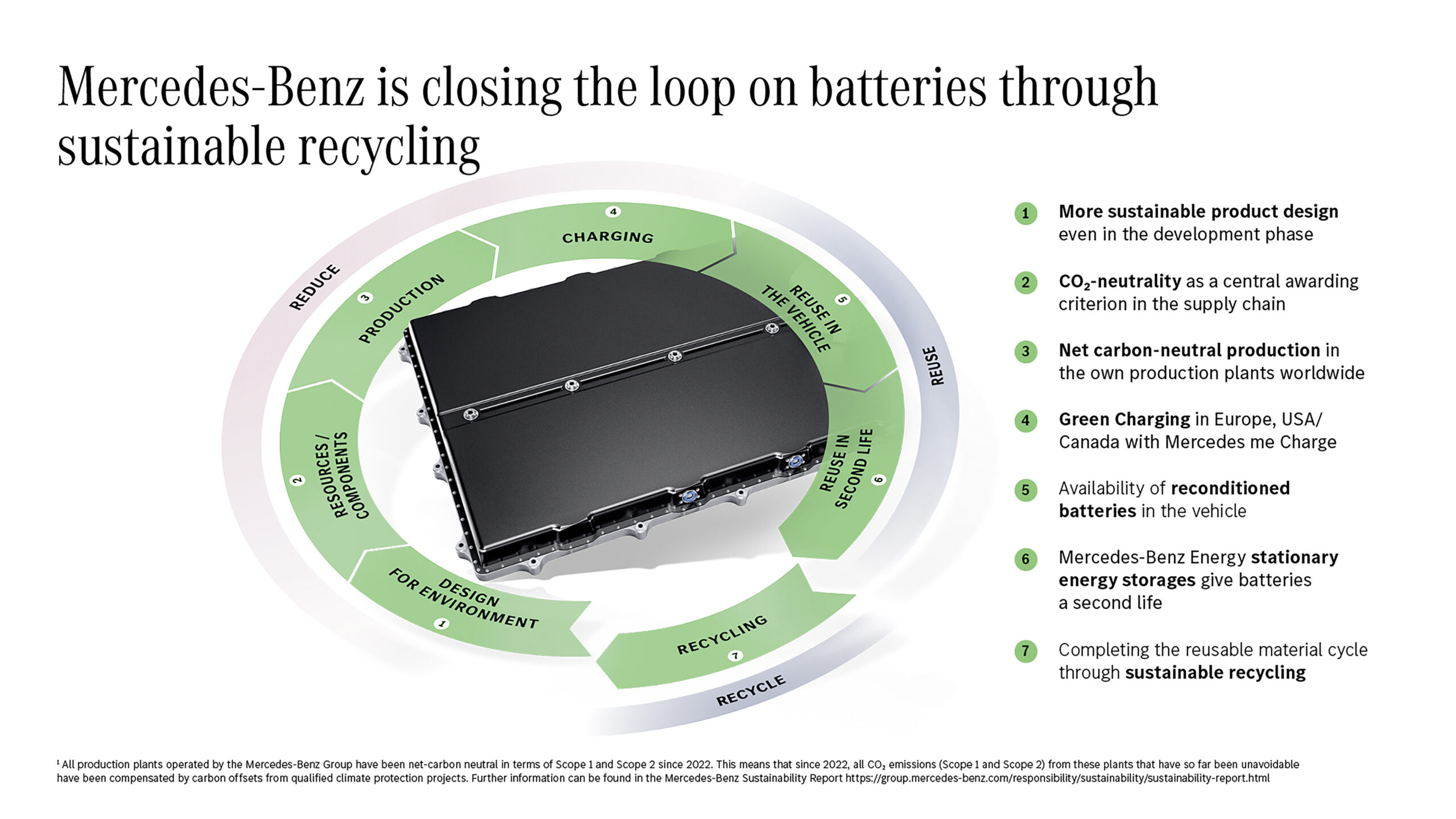
Stellantis and Mercedes-Benz announce plans for next-gen battery development
By onMarket Trends | Technology
Stellantis and research institution, CEA, have teamed up for a five-year collaboration that targets the in-house design of next-generation battery cells for electric vehicles.
Mercedes-Benz has also taken a new global step in battery production.
The joint research program by Stellantis and CEA includes designing advanced technology cells with higher performance, a longer lifespan, and a lower carbon footprint at competitive costs, which can lead to more affordable and sustainable battery electric vehicles (BEVs) in the future, a Stellantis news release states.
“We know that battery technology is poised for change,” said Ned Curic, Stellantis Chief Engineering and Technology Officer, in the release. “While we don’t know exactly how it will change, we are committed to being at the forefront of this transformation. Internally, we are working around the clock placing multiple bets and exploring various technologies.
“At the same time, we are collaborating closely with tech startups, laboratories, universities, and the most prestigious research institutions in the world like CEA. We believe that this collaboration will accelerate the arrival of disruptive battery cell technology, supporting our mission to offer clean, safe, and affordable mobility to our customers.”
Through its Energy Division, CEA provides advanced innovations for decarbonization, according to the release.
“CEA is proud to support Stellantis with an ambitious multi-year R&D program on battery cells, which takes place in the frame of CEA/Stellantis global partnership,” said Philippe Stohr, Head of CEA Energy division, in the release. “This exciting project makes the best use of more than 25 years of expertise in the field of li-ion batteries at CEA to the benefit of one of the major automotive actors in the competitive race for electrical mobility. Our challenge is to speed up design and fabrication and to allow deep understanding of the most advanced cells technologies by sharing our expertise, skills and vision.”
The goal of the joint battery cell program is to provide more affordable, next-generation EV batteries with best-in-class technologies to Stellantis and its joint venture gigafactories.
The battery cell design program reinforces a 20-year dynamic collaboration with CEA, Stellantis said. Other areas of joint research include disruptive chemistries and CO2 footprint research, battery modeling, fuel cell development, life cycle assessment, and connectivity.
The collaboration is the latest example of Stellantis’ continuing drive to achieve the goals of the Dare Forward 2030 strategic plan, the OEM said. Stellantis says it’s on track to become a carbon net zero corporation by 2038, all scopes included, with single-digit percentage compensation of remaining emissions.
Mercedes-Benz says it is also working on strengthening its EV battery technology development.
The OEM recently opened a new eCampus at the heart of its headquarters in Germany to serve as the center for the development of cells and batteries for its future EVs.
The goal is to develop innovative chemical compositions and optimized production processes for high-performance cells with “Mercedes-Benz DNA” and reduce battery costs by more than 30% in the coming years, Mercedes said in a news release.
The eCampus covers the entire field of battery and cell technology from the development and evaluation of new cell chemistries and industrial-scale cell production to testing and certification of complete battery units.
“The opening of the Mercedes-Benz eCampus marks an important step in our sustainable business strategy,” said Ola Källenius, Chairman of the Board of Management of Mercedes-Benz Group AG, in the release. “It is our ambition to also play a leading technological role in electric mobility. The eCampus brings us closer to this goal.”
Mercedes-Benz is developing various forms of cell chemistry. Among other things, the OEM says it’s working on lithium-ion cells with high-energy anodes based on silicon composites and innovative cobalt-free cathode chemistries as well as on solid-state battery technology. The goal is to develop the best possible cells for high energy density, fast-charging capability, and performance and to build up expertise for their industrialization.
State-of-the-art production facilities in the industrial cell lab at the eCampus make it possible to manufacture and test battery cells with different chemistries on an industrial scale, according to Mercedes-Benz.
“The cell production process has a major influence on the quality of the battery,” Mercedes says in the release. “Mercedes-Benz has the ambition to not only master the chemical composition of the cells but also the industrial manufacturing process. The new industrial cell lab enables the company to gain expertise in the economical production of cells with ‘Mercedes-Benz DNA.’ It thus complements the two existing cell laboratories: novel cell chemistries and advanced cell designs are developed and evaluated in the chemistry lab. In the flexible cell lab, the new developments are produced and tested in automotive pouch cells.”
The opening of the eCampus marks an important step in Mercedes-Benz’s sustainable business strategy, according to the release.
By 2039, the OEM aims for its fleet of new vehicles to be net carbon neutral over their entire lifecycle. In addition to decarbonization, one of the most important levers for this is the establishment of a truly circular economy in order to conserve primary resources, Mercedes said.
Mercedes-Benz is pursuing a holistic approach to batteries, focussing on three core issues: circular design, value retention, and closing the loop.
The eCampus activities form the starting point of Mercedes-Benz’s circular concept.
The OEM offers reconditioned batteries as spare parts for all-electric vehicles in line with the concept of a circular economy and to conserve resources. In addition, subsidiary Mercedes-Benz Energy, has established a successful business model for large-scale stationary storage applications.
Batteries that can no longer be used in the vehicle can be reused in second-life storage systems. Material recycling comes at the end of a battery’s life and is the key to closing the materials loop, Mercedes said. An important step in this direction is the opening of a battery recycling factory this year in Kuppenheim in southern Germany.
Images
Featured image: Stellantis and CEA are working together to design advanced technology cells with higher performance, a longer lifespan, and a lower carbon footprint at competitive costs. (Photo provided by Stellantis)
Secondary photo provided by Mercedes-Benz

